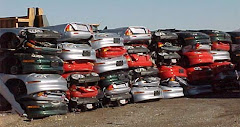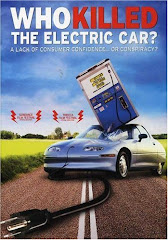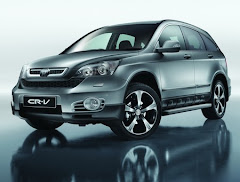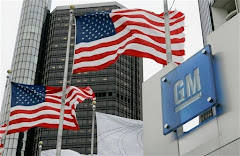Planet Earth; our home, our life source, our survival. Our planet is something we should treasure, constantly aim to look after and preserve it for the benefit of future generations. However the human race seems to be doing the opposite. Everyone is aware of the environmental damage we are inflicting on our planet. Tons of research has been done, most of which shows that the future only holds much worse results. Global warming is a massive problem the world is currently facing, and it is something that will have a huge impact on the way future generations will live their every day life. People are well aware of this global epidemic, yet it is still not a top priority on people’s minds. There are many, many things people can do, altering the way they live to help the planet, even just a little bit. These things include saving energy by using less electricity, utilizing alternative options of power (such as solar power) and much more. Another aid to help fix global warming involves something that was completely destroyed and hidden from the world; an invention that could have helped the global warming threat greatly; the electric car.
The electric car was something that was subtly introduced to the market (at least in a world wide sense). It was primarily released in the
What makes the electric car so environmentally friendly?
Most obviously the electric car was so healthy for the environment because it didn’t use fuel and therefore didn’t release carbon dioxide into the atmosphere. Carbon dioxide (CO2) plays a vital role in plant and animal processes, such as photosynthesis and respiration; however too much of a good thing, often turns bad. The problem being is that too much carbon dioxide is being released into the atmosphere, due to human activities, such as deforestation, making of cement, burning fossil fuels, and driving petroleum run vehicles. This is causing an environmental problem known as the Greenhouse Effect. This is a process whereby gasses, known as greenhouse gasses, in the troposphere (the lower part of the atmosphere) absorb some of the heat sent by the sun and help to regulate the temperature of the earth’s surface. Carbon dioxide is one of these greenhouse gasses. The problem began at the brink of the Industrial Revolution (1850). Human processes have caused too much of these gasses to be released (including CO2), which is effecting the temperature of the earth to increase. It has been constantly increasing which has now caused the problem we are all so aware of, Global Warming. It is suspected that Global warming is the reason for an increase in storm activity, melting of ice caps, flooding, and a variety of other environmental disasters. This is an increasing problem as CO emissions continue to rise, from 280ppm in the 1850’s to 364ppm in the 1990’s.
Electric cars were a solution to help a big problem we face. Research shows that on average a petroleum fuelled car in the
Who stopped the electric car and why?
“Who killed the electric car?” is an eye opening documentary by American writer and director Chris Paine. The shocking truth abut the death of the electric car is revealed in this gripping issue-orientated documentary. Chris relays the story through a number of interviews and narratives, showing audiences the truth about an industrial culture whose dislike of change and constant reliance on oil may be deeper then its ability to embrace effective solutions. The film has been nominated and won many awards at a variety of prestigious film festivals. With the help of Sony Pictures marketing influence, this LA produced documentary has become a world wide hit, and has become the third highest grossing documentary in 2007.
In the film, the question “whose fault is it?” is posed. The demise of the electric car is considered a serious offense throughout the film. Interviews with electric car fans and activists reflect how loved this car truly was, and was believed to be a perfectly good solution to helping our planet replenish itself after our damage. The film reviews a number of suspects that could be to blame for the complete destruction of the electric car (namely the EV1). The suspects are all investigated and scrutinized, and found either guilty or not guilty. The following are to guilty suspects: the oil industry, the automobile industry, the
Suspect number one is the oil industry. This seems to be quite an obvious assumption. The oil industry sells 3 billion gallons of gasoline per week in the
due to their greed and money hungry attitudes.
Suspect number two is the automobile industry. Being the competitor to the electric car, of course the automobile industry would not be too happy with this new well loved product. However GM,
The third suspect is the USA Government. In 2002 the
although better for our planet, are pushed aside. However in 2006, with the alarmed American public over war on oil in
Suspect number four is the California Air Resource Board (CARB). Although CARB did much to try aid the production of electric cars, they failed to steer their mandate in the right direction and it failed. CARB buckled under pressure put on them by the oil and auto industries, and dropped electrical vehicle production from the mandate. The chairman of CARB, Alan C. Lloyd, only a few months after the failed mandate and the killing of the electric car, became the chairman of the California Fuel Cell Partnership. Seemingly jumped ship, Lloyd claims that the CARB mandate was not feasible. CARB is found GUILTY for being involved in destroying the electric car.
The last remaining suspect is the consumer. The consumer never seemed to embrace the idea of the electric car, even though they were well aware of the price of maintenance (in comparison to petroleum fuelled cars) as well as the environmental impact electric cars have. Still the consumer indulged in “gas guzzling” vehicles, such the SUV. Even opinion makers, such as the press, did nothing to shift perspectives. Lack of effective advertising and awareness gave consumers little incentive to utilize the electric car as an alternative transport option. Rumours were also spread about the EV cars, and were given the reputation of being “elitist”. It was said that electric vehicles means that everyone pays but only the elite will drive. It was never considered though that no matter what the income level is, the EV still benefits everyone, through a better air quality. So the consumer is found GUILTY for naivity toward a new product that may have aided their future exsistance, in allowing the electric car to be destroyed.
Seen in the above information on who destroyed the electric car and why, it is clear that humans seem to disregard their planet and the importance of looking after and preserving it constantly. The removal of the electric car is only one rejected solution. There have been many more. After watching the documentary “Who killed the electric car?” I realized how money hungry people truly are. They say that money makes the world go round, but in fact that saying seems now to be a little ironic. Money seems to be the thing that is stopping our world, from growing, from healing and replenishing. We constantly use this earth to survive, through the resources it provides for us. But how long do we expect these resources to be around for? The environment is a precious thing. Global warming has become a big hazard to our environment, a hazard that needs to be stopped, or at the very least reduced. Humans are responsible for the condition the earth is in. But we could also be the solution. The electric car is only one of many helpful aids that move us toward a life of environmentally friendly living. The less carbon dioxide we release into the atmosphere the better chance we have of reducing global warming. The results will most likely only take effect years and years from now, but if generations constantly think of the future eventually it will come full circle.
How to help.
There are a number of solutions to our environmental problem that people should consider on a day to day basis; such as planting trees. It may seem like a feeble way to “save the earth”, but it will in actual fact make a difference. In the
Other than planting trees, there are a number of other activities that can be done to help the environment. Conserving energy is one, by utilizing alternative methods of power that are more environmentally friendly. There are so any advances in solar power, hydro and wind power, that won’t affect our way of life, but will make a big difference to helping reduce global warming. Less greenhouse gas emissions is another solution, one that may take longer to achieve. Hydro and hybrid powered cars are environmentally healthier to use, instead of petroleum fuelled cars. This is a bump in the road that the public need to become more aware of. Awareness is an important element when it comes to this great environmental issue.
Our earth is our home, our life source, our survival. But it now depends on us as much as we depend on it. Finding a common ground is important in order for humans to live a comfortable lifestyle as well as maintain a healthy, sustainable planet.
The End.










